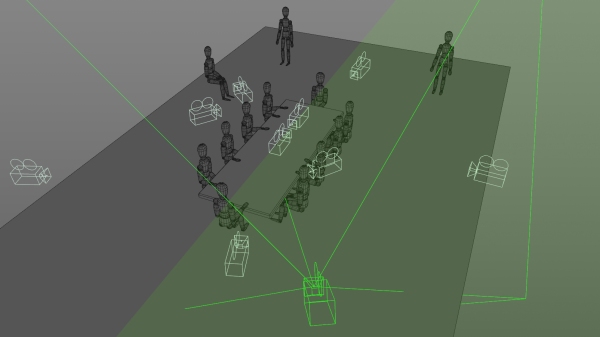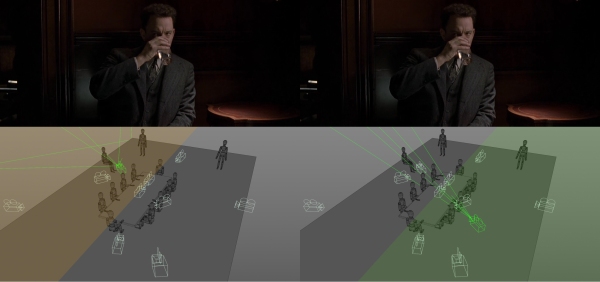Superb article on the superb cinematography of a superb film. Please enjoy and show your support for Cinema Shock.
The main action is happening between Paul Newman and Daniel Craig’s characters, so it kinda makes sense to draw an “action line” between them and cover the scene from one side of the line. This way you’ll avoid problems later in the editing.

From the picture above you can see, that most camera setups are located on the right side of the line. This side was probably chosen due to technical considerations (limitations of the location etc.)
The scene starts with a high angle master shot of all characters, this clearly shows where each character is seated. Now, we can freely cut to individual characters without confusing the viewer… unless we cut to the camera placed on the other side of the action line.

In the third shot the camera physically jumps to the other side of the line. However, it doesn’t feel wrong. The reason is that you could…
View original post 259 more words















